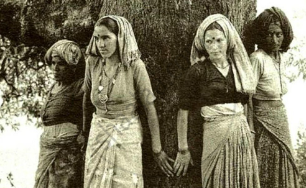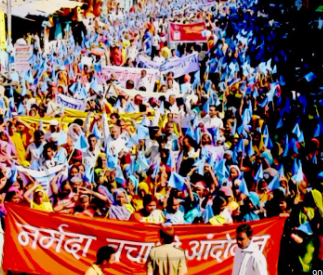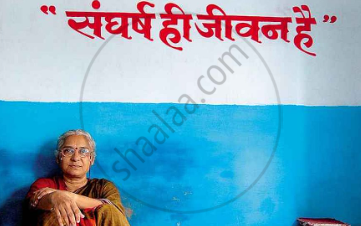Topics
Historiography : Development in the West
History : Applied History
Working of the Constitution
Historiography : Indian Tradition
The Electoral Process
Political Science : Working of the Indian Constitution
Applied History
Political Parties
History of Indian Arts
- What is ‘Art’?
- Indian Traditions of Visual Arts (Drik Kala): Painting
- Prehistoric Paintings
- Mural Paintings and Cave Painting
- Folk Styles of Paintings
- Classical Styles of Painting
- Miniature Paintings in Manuscripts
- Modern Indian Paintings
- Indian Traditions of Visual Arts (Drik Kala): Sculpture Art
- Indus Civilization Sculpture
- Folk Styles of Sculptural Art
- Classical Styles of Sculptural Art
- Indian Iconography
- Indian Traditions of Visual Arts (Drik Kala): Architecture and Sculpture
- Rock-cut Architecture
- Temple Architecture
- Indo-Islamic Architecture
- Indo-Gothic architecture
- Indian Traditions of Performing Arts
- Indian Theatre
- Indian Music
- Indian Dance
- Present Scenario of the Performing Arts
- Art, Applied Art, and Professional Opportunities
Social and Political Movements
- Movement
- Important Movements in India
- Tribal Movement
- Farmers Movement
- Worker's Movements
- Women’s Movement
- Environment Movements
- Consumer Movement
Mass Media and History
Challenges Faced by Indian Democracy
Entertainment and History
Sports and History
Tourism and History
Heritage Management
History - Imperialism
History - 20th Century Age of conflict
History - Emancipation of Asia and Africa
History - World after World War 2
Political Science
Geographical discoveries and colonization
- Concept for Geographical Discoveries and Colonization
Africa
- Imperialism - Africa
Asia: India, China, Japan
- Concept for Asia: India, China, Japan
Dictatorships in Europe, Second World War and world
- Concept on Dictatorships in Europe
- Concept for Second World War and World
First world war
- Concept on First World War
The League of Nations
- Concept for the League of Nations
Russian Revolution
- Concept for Russian Revolution
United Nations Organization
- Concept for United Nations Organization
Africa
- Emancipation of Africa
Asia
- Emancipation of Asia
Globalization
- Globalization After World War II
Scientific and Technological Progress
- Scientific and Technological Progress After World War II
Cold war
- Formation of the Cold War
Social Diversity and Democracy
- Social Diversity
- Coccept for Caste/Race and Democracy
- Concept for Language and Democracy
- Cocnept for Religion and Democracy
- Concept for Gender and Democracy
- Concept for Democracy and Diversity
Challenges to Democracy Remedial Measures to the Challenges
- Concept for Challenges to Democracy Remedial Measures to the Challenges
Internal work
Democracy
- Democracy - Meaning, Types and Characteristics
Political Parties and Types
- Political Parties
- Importance of Political Parties
- Major National and Regional Parties in India/ Types of Political Parties
Notes
Environment movements:
- We are aware that environmental degradation is a serious problem at the national and international levels.
- At the international level, several movements are working to stop the deterioration of the environment.
- In India, many movements are working on different aspects of the environment.
- The environment movements are taking up issues like the protection of biodiversity, protection of different sources of water, protection of forests, green belt, pollution of rivers, use of chemicals and their ill effects, etc.
Important Environmental Movement:
1. Chipko movement:
- When the forest authority denied the villagers' request to cut down ash trees for the purpose of creating agricultural tools, however, the forest service gave a sports manufacturer permission to utilize the same parcel of land for business purposes, the campaign had its start in two or three villages in Uttarakhand.
- Hugging the trees to stop them from being cut down was their new protest strategy.
- These protests marked the beginning of a world-famous environmental movement in our country – the Chipko movement.
- Larger issues of the region's exploitation on an ecological and economic level were brought up. The villagers asked that neither outsiders nor locals should be granted any contracts for forest exploitation.
- Natural resources including land, water, and forests should be effectively managed by communities. They demanded that the government give small businesses access to low-cost supplies and guarantee regional development without upsetting the ecological balance.
- The initiative raised the financial woes of landless forest workers and demanded minimum wage guarantees.


Chipko movement
2. Narmada Bachao Aandolan:
- In the early 1980s, a large-scale construction project was started in the Narmada valley in central India. The project included 135 dams totaling 30 large dams that were built on the Narmada and its tributaries, which flow through the states of Gujarat, Maharashtra, and Madhya Pradesh.
- 245 villages from these States were predicted to be affected during the dam's construction. It was necessary to relocate almost 2.5 lakh residents from these villages. Local activist groups brought up the issues of relocation and effective rehabilitation of those affected by the project early.
- The movement claimed that such an analysis must account for the larger societal costs of the developmental undertakings. The forced relocation of those affected by the project, the severe loss of their way of life and culture, and the degradation of ecological resources were some of the social costs.
- The NBA argued that such decisions should involve local people and that they should have real power over resources like water, land, and forests.
- Over twenty years were spent in persistent agitation by the Narmada Bachao Aandolan.


Narmada Bachao Aandolan
Text
|
Dr. Rajendra Singh |
|
If you would like to contribute notes or other learning material, please submit them using the button below.
Related QuestionsVIEW ALL [7]
Complete the concept map.
| Waterman of India, Dr. Rajendra Singh |
| ↓ |
| Brought water revolution in Rajasthan |
| ↓ |
| Revived rivers in the desert of Rajasthan |
| ↓ |
| ______ |
| ↓ |
| Formed 'Tarun Bharat Sangh |
| ↓ |
| Started campaign at national level |
| ↓ |
| ______ |

